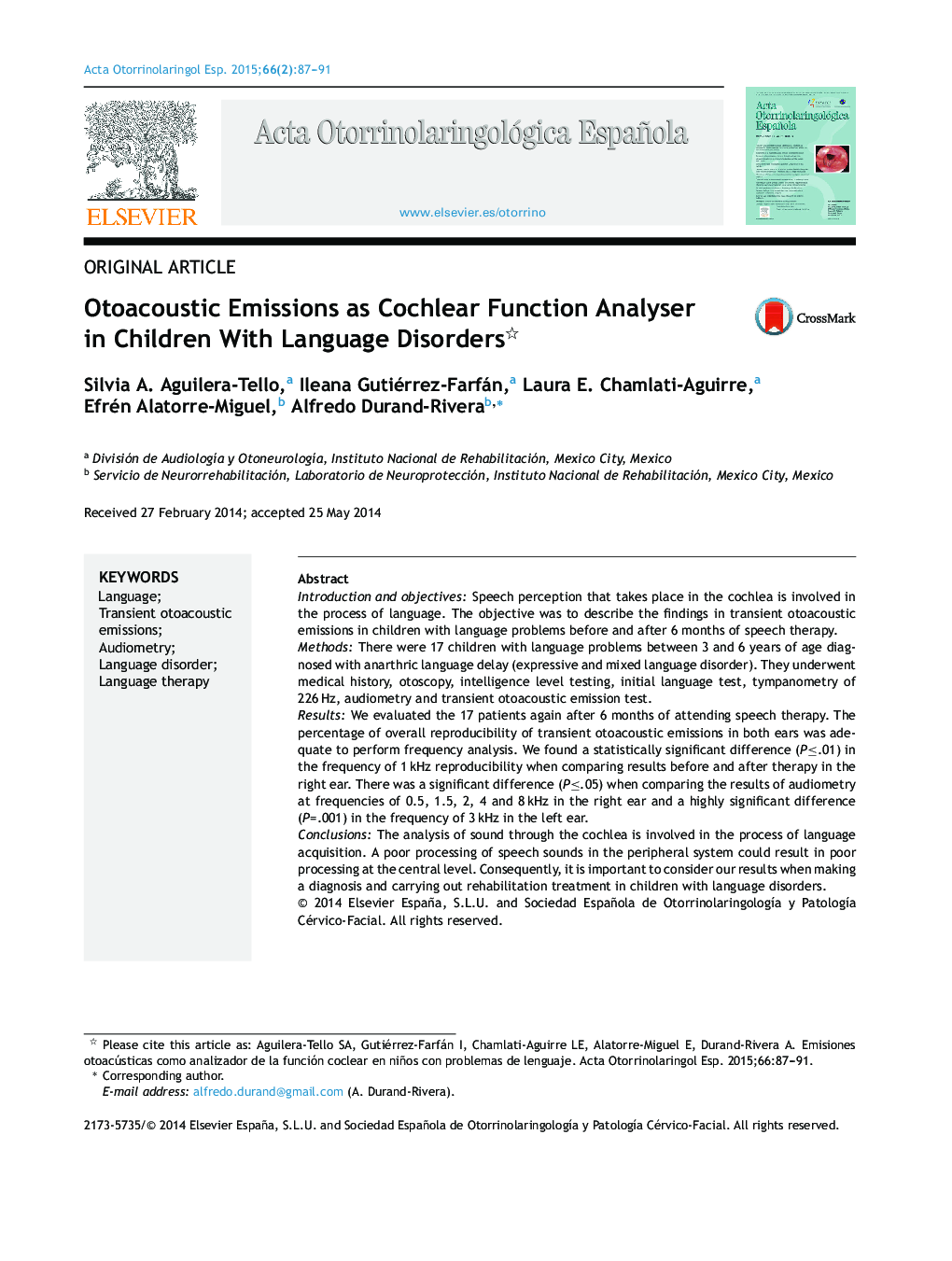| Article ID | Journal | Published Year | Pages | File Type |
|---|---|---|---|---|
| 4100807 | Acta Otorrinolaringologica (English Edition) | 2015 | 5 Pages |
Introduction and objectivesSpeech perception that takes place in the cochlea is involved in the process of language. The objective was to describe the findings in transient otoacoustic emissions in children with language problems before and after 6 months of speech therapy.MethodsThere were 17 children with language problems between 3 and 6 years of age diagnosed with anarthric language delay (expressive and mixed language disorder). They underwent medical history, otoscopy, intelligence level testing, initial language test, tympanometry of 226 Hz, audiometry and transient otoacoustic emission test.ResultsWe evaluated the 17 patients again after 6 months of attending speech therapy. The percentage of overall reproducibility of transient otoacoustic emissions in both ears was adequate to perform frequency analysis. We found a statistically significant difference (P≤.01) in the frequency of 1 kHz reproducibility when comparing results before and after therapy in the right ear. There was a significant difference (P≤.05) when comparing the results of audiometry at frequencies of 0.5, 1.5, 2, 4 and 8 kHz in the right ear and a highly significant difference (P=.001) in the frequency of 3 kHz in the left ear.ConclusionsThe analysis of sound through the cochlea is involved in the process of language acquisition. A poor processing of speech sounds in the peripheral system could result in poor processing at the central level. Consequently, it is important to consider our results when making a diagnosis and carrying out rehabilitation treatment in children with language disorders.
ResumenIntroducción y objetivosLa percepción del sonido que se lleva a cabo en la cóclea está involucrada en el lenguaje. El objetivo fue describir los hallazgos encontrados en las emisiones otoacústicas transitorias (EOT) en niños con problemas de lenguaje antes y después de 6 meses de terapia.MétodosA 17 niños diagnosticados como anártricos, se les realizó historia clínica, escala de inteligencia, prueba de lenguaje inicial y estudios audiológicos.ResultadosAl hacer la comparación del inicio y después de 6 meses de terapia, encontramos, en el análisis frecuencial de las EOT una p ≤ 0,05 en 1 kHz en el oído derecho, en la audiometría; se encontró una p ≤ 0,05 en las frecuencias de 0,5, 1,5, 2, 3, 4 y 8 kHz en el oído derecho y en las frecuencias de 2, 3, 4 y 8 kHz en el oído izquierdo.ConclusionesEl análisis del sonido a través de la cóclea está involucrado en el proceso de adquisición del lenguaje. Un mal procesamiento de los sonidos del lenguaje en el sistema periférico podría dar como resultado un mal procesamiento a nivel central. Por esto, es importante tener nuestros resultados en consideración al realizar el diagnóstico y el tratamiento rehabilitador en los niños con trastornos de lenguaje.
